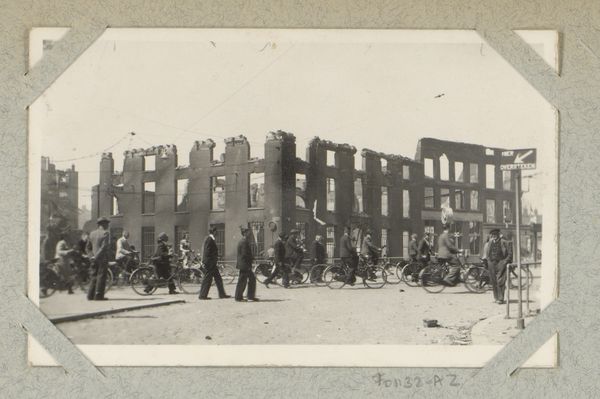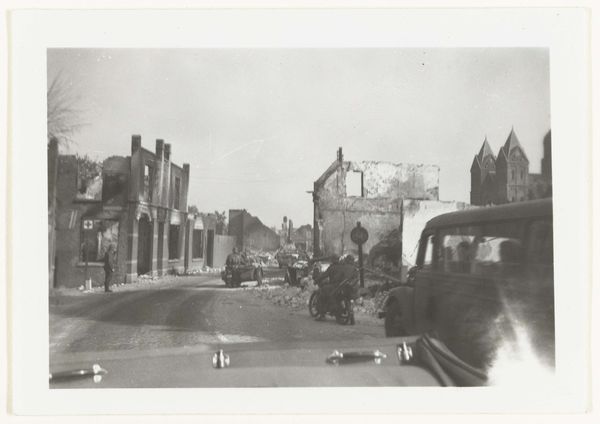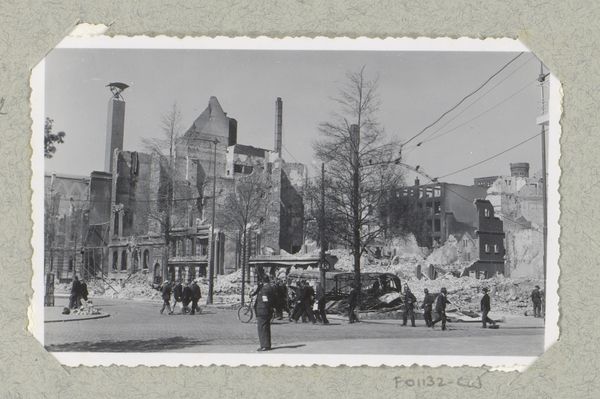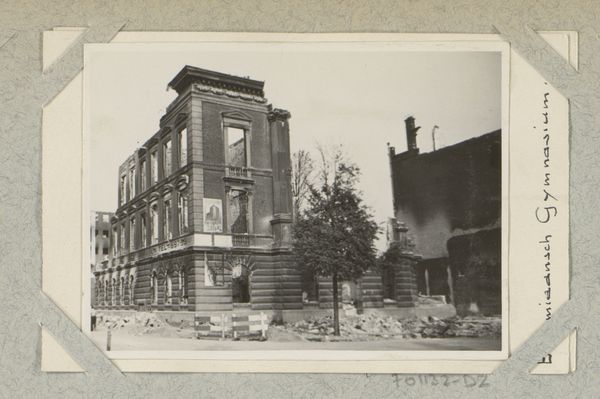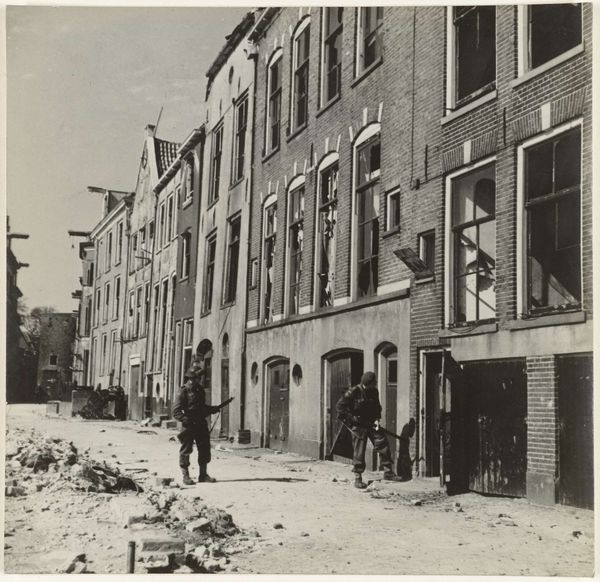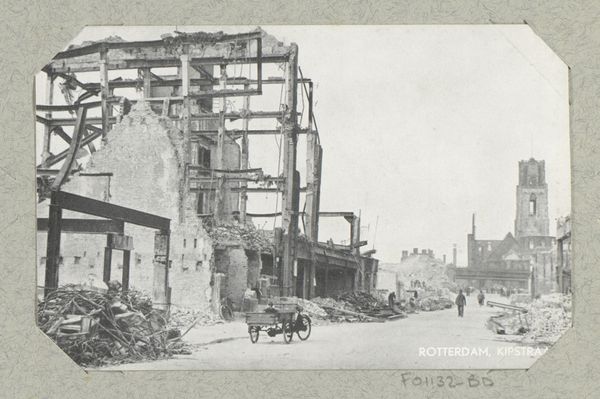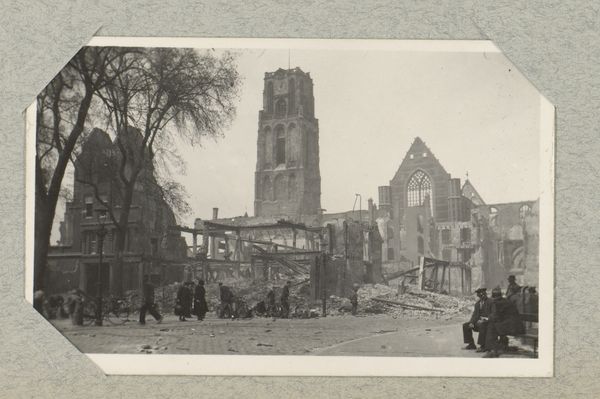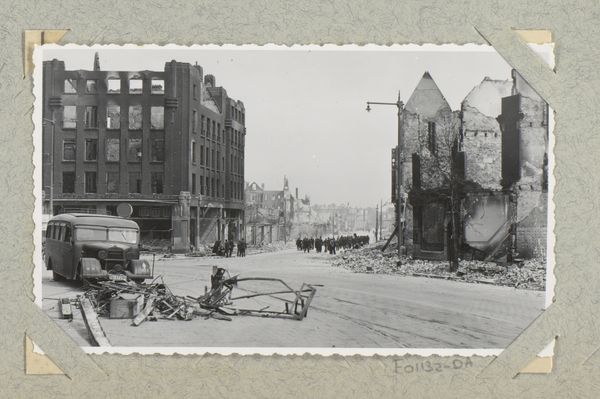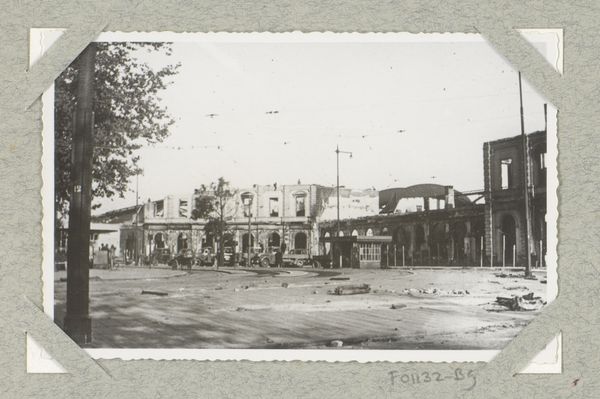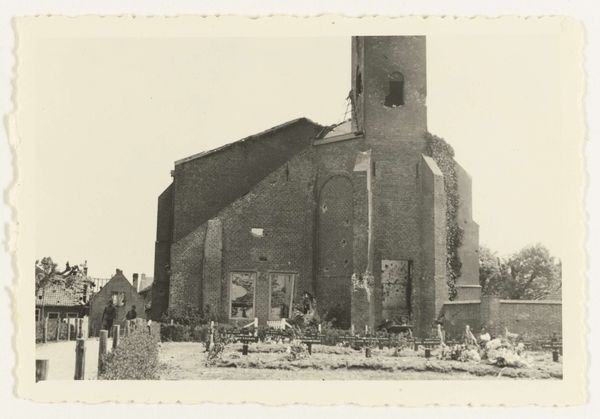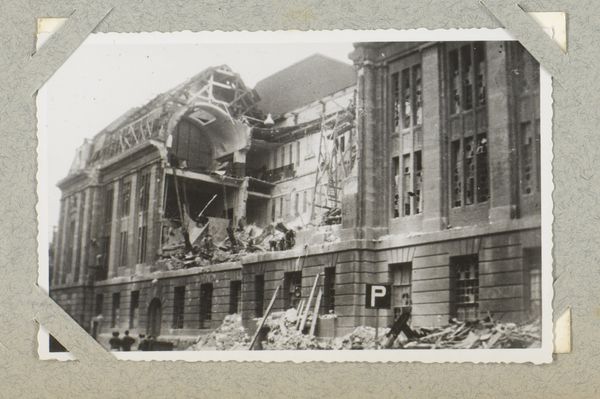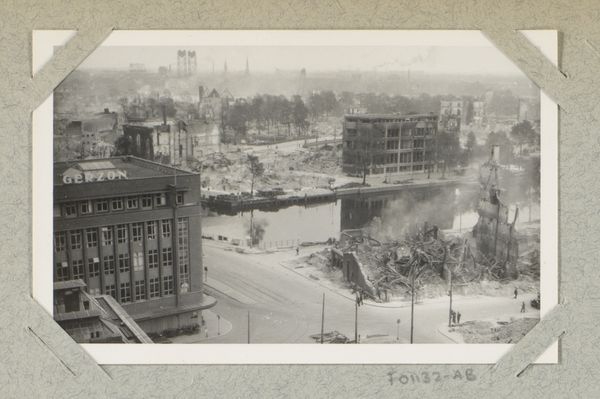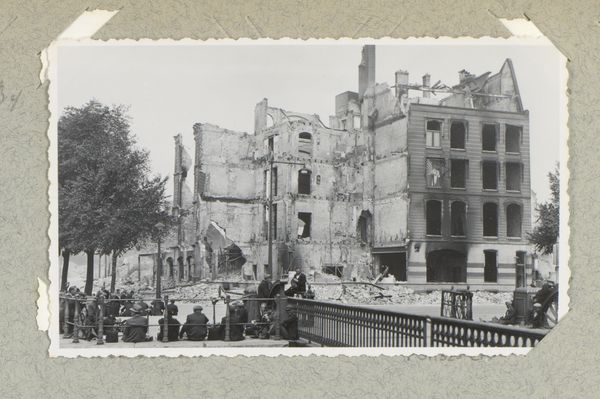
Gezicht op de hoek Rederijstraat Boompjes met uitgebrande huizen c. 1940 - 1945
0:00
0:00
print, photography, gelatin-silver-print
#
print photography
# print
#
landscape
#
archive photography
#
street-photography
#
photography
#
historical photography
#
gelatin-silver-print
#
19th century
#
realism
Dimensions: height 6.5 cm, width 9.5 cm
Copyright: Rijks Museum: Open Domain
Editor: This gelatin-silver print, "Gezicht op de hoek Rederijstraat Boompjes met uitgebrande huizen," was taken anonymously sometime between 1940 and 1945. The burned-out buildings juxtaposed with people going about their day...it's eerie. How would you interpret this photograph? Curator: Formally, the photograph presents a stark contrast between the geometric regularity of the damaged architecture and the somewhat softer, more organic forms of the figures in the foreground. The grayscale palette, of course, flattens the scene, emphasizing texture and form. Note the photographer's careful placement of the horizon line, dividing the image roughly in half. What compositional elements stand out to you? Editor: The sharp angles of the buildings against the softer curve of the arches...and how the figures sort of echo the vertical lines. Is that intentional, do you think? Curator: Whether intentional or not, that interplay between line and form is crucial to understanding the photograph's power. Semiotically, the ruins signify devastation and loss, while the people suggest resilience and continuity. The formal arrangement emphasizes this tension. The light source appears to be behind the camera, illuminating the facades. How does that choice of light affect your interpretation? Editor: I guess it throws the destruction into sharp relief, no shadows to soften it. The people become more like silhouettes, part of the scene but also separate from the destruction itself. I had focused on the subject, but the form of this print has just as much to say. Curator: Precisely! And by analyzing that interplay, we achieve a richer understanding.
Comments
No comments
Be the first to comment and join the conversation on the ultimate creative platform.
